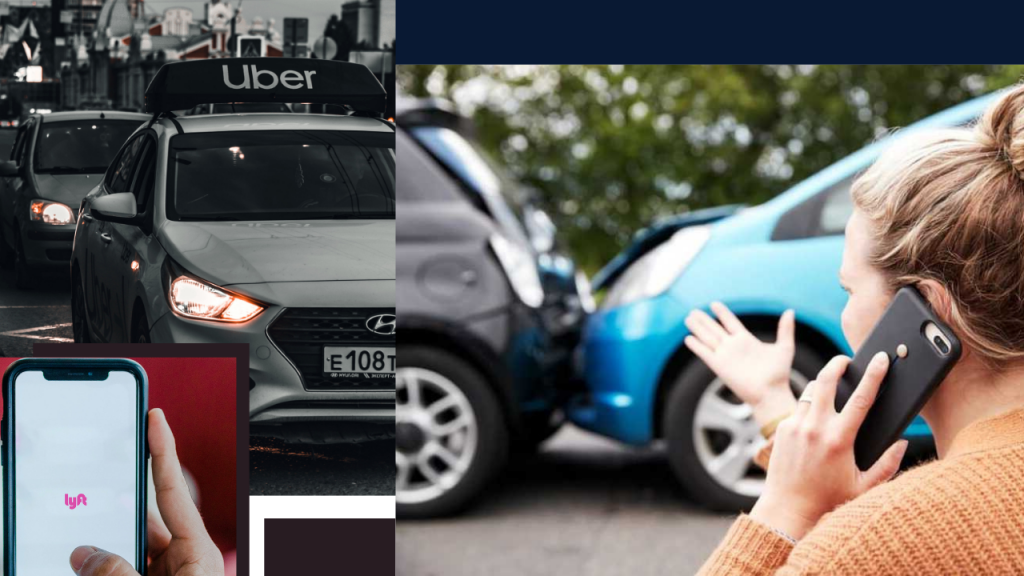Why Are Los Angeles Rideshare Accident Claims So Complicated?

If you’ve ever been in a car accident in Los Angeles, you know how stressful it can be to figure out who’s responsible and how to handle the insurance claims.
But when it comes to accidents involving rideshare companies like Uber and Lyft, things get even more complicated, especially if you do not have a Los Angeles rideshare accident lawyer to help you navigate the process from start to finish.
You might think that dealing with an Uber or Lyft driver would be just like any other car accident, but honestly, it’s not. There are multiple layers of responsibility, confusing insurance rules, and lots of legal fine print.
Different Insurance Rules Depending on the Driver’s Status
When you’re involved in a rideshare accident, one of the first things to understand is that Uber and Lyft have different insurance rules based on what the driver was doing at the time.
The complexity comes from knowing exactly when and how the rideshare company’s insurance applies.
When the Driver is Waiting for a Ride
If the driver is logged into the app but hasn’t accepted a ride request yet, their personal insurance is usually the main coverage. But if that personal insurance doesn’t cover the full cost of the accident, Uber or Lyft may kick in some extra coverage.
However, this coverage is a lot less than what’s offered when a passenger is in the car. It’s also important to know that if the driver isn’t even logged into the app at all, the rideshare company won’t cover anything. This is why knowing what the driver was doing at the time of the accident is key.
When the Driver is on the Way to Pick Up a Passenger
Once the driver has accepted a ride and is on their way to pick someone up, Uber and Lyft provide full insurance coverage. This includes a big liability policy that covers up to $1 million for damages, and it’s much more extensive than the coverage they offer when the driver is just waiting for a ride request. But even then, there are still limitations to keep in mind.
When the Passenger is in the Car
This is when the coverage gets as good as it gets. When a passenger is actually in the car, Uber or Lyft’s insurance steps in with a $1 million liability coverage, along with protection in case the other driver is uninsured or underinsured.
This is the most straightforward period when it comes to making a claim, but things still aren’t always simple.
Who is Responsible for the Accident?
You might assume that in a rideshare accident, the driver is automatically at fault, but it’s not always that easy. There are plenty of times when multiple parties are responsible for an accident.
For example, maybe the Uber driver was speeding, but the other driver was under the influence of alcohol. Or, perhaps the accident happened because of poor road conditions, like broken traffic lights or unclear signage.
In these cases, it’s not just the driver you have to consider; you might also need to look at the rideshare company, other drivers, or even government agencies responsible for maintaining the roads.
One thing to keep in mind in California is the concept of comparative negligence. This means that if more than one person or company is at fault, the blame can be divided between them.
For instance, if the Uber driver ran a red light, but the other driver was speeding and caused the crash, the court might say the Uber driver was 30% responsible and the other driver was 70% responsible. This means you could end up filing claims with different insurance companies, making things even more complicated.
Why Isn’t Uber or Lyft Always Liable?
Here’s where things really start to get tricky. Uber and Lyft classify their drivers as independent contractors, not employees. This means that if an accident happens, the rideshare companies often try to distance themselves from the driver’s actions.
They may not take responsibility for what happens in many situations, even though they do have insurance policies in place to help.
So, depending on the circumstances of the accident, you might find yourself trying to work with the driver’s personal insurance or a combination of different insurance companies to get the compensation you need.



